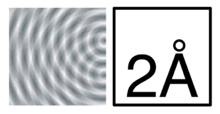500 Words, Day Five
In that there's no prompt from Christina today, this entry dabble on the topic of the blank page (or blank canvas). If there were in reality some mutant or devil whose power was to manifest someone's greatest fear, for most artists and writers it would be exactly this: the blank page (or canvas).
I used to have a neighbor who was a painter. He was tall and had just moved from Norway to Boulder. He had a booming voice, which meant on a summer day, when everyone's windows were open, I could hear when his work was going well and when it wasn't. He'd "hrm" or "ya!" as he created large, abstract oils, with layers of swirling colors.
Since most of my insight into the painting process came from the Scorsese segment of "New York Stories", I asked my neighbor how he worked.
He said that he always took a new canvas and dabbed a spot of paint in or near the center, right off. This, he said, meant it was no longer a blank, empty space; he was free to sketch with chalk, or even to go straight to swiping on paint. A few years later, a German woman I briefly dated told me she did a similar thing: whenever she got a new sketchbook, she'd thumb through it and leave a swipe of pencil, or a dot, on each page.
One of the best recurring uses I've seen that indicates this is a primal fear is how each time DC Comics has rebooted the Legion of Superheroes, our valiant protagonists have fought against, but fell prey to... a blank, white expanse of nothingness. That is, they look on in horror as they come to face a blank page.
There's a tyranny we feel when we have to decide. For some of us, it's especially acute when the result will be seen by others. We're about to destroy unlimited potential. It's a localized version of the basic question of philosophy: Why is there something instead of nothing? Anything you do will close off alternate paths that could have lead to that one perfect thing. Not to freak you out or anything.
And this isn't just a problem for artists. In the UX field, we're often faced with the "where do we start" problem. It may be a question of what kind of service we might build to help with a problem or what's the grid of our web page. But in UX, we already have the dot in the center of our canvas: the user. Who is the user, how do we know this, and what does he or she need?
So, in a way, no UX project is really a blank page. If it is, if you're pulling something out of thin air, you're doing it wrong. You should ground yourself in observation of real people (not yourself), and see what they face, how they think and feel.
And that's 500 words.
